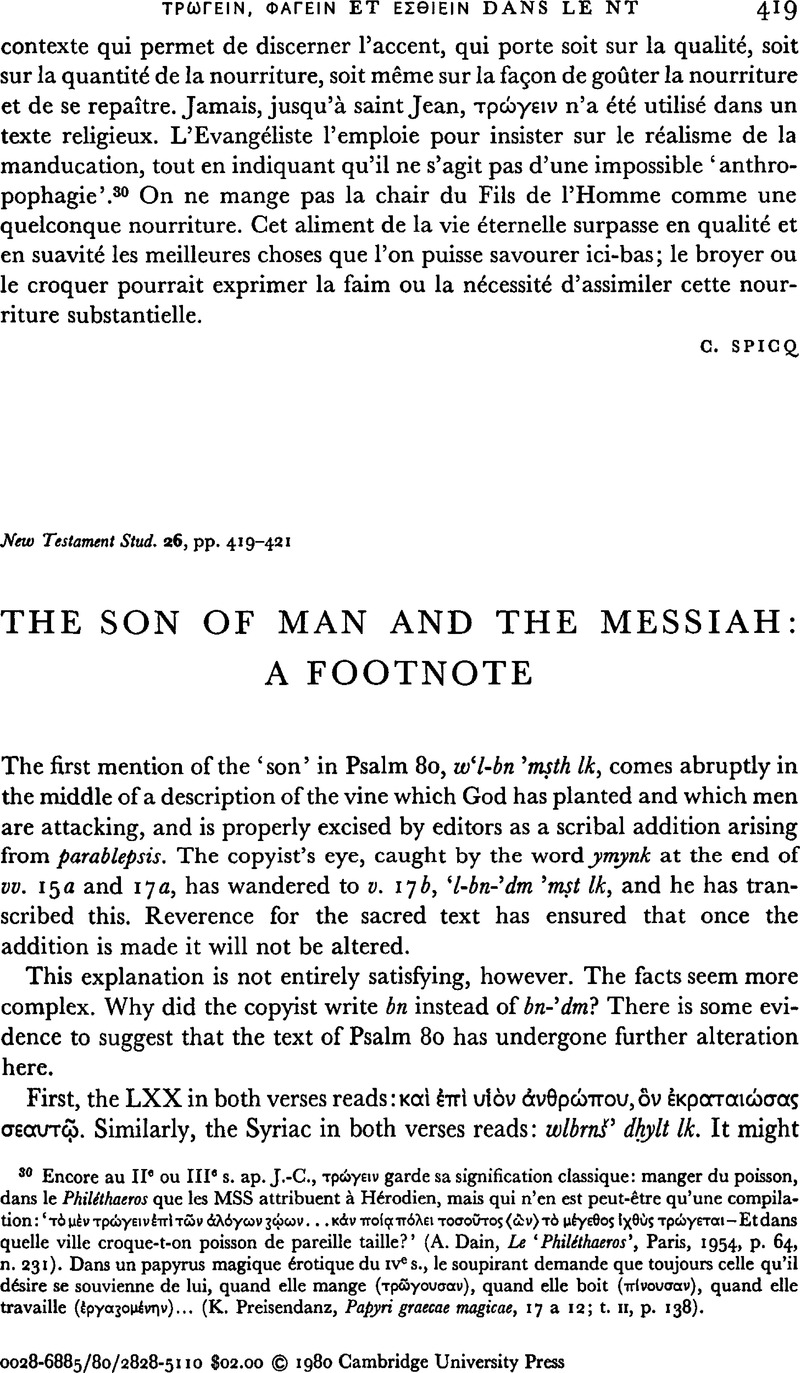Published online by Cambridge University Press: 05 February 2009

1 See Vermes, Geza, ‘The Use of ![]() in Jewish Aramaic’ in Matthew Black, An Aramaic Approach to the Gospels and Acts (Oxford, 3 1967), p. 316.Google Scholar
in Jewish Aramaic’ in Matthew Black, An Aramaic Approach to the Gospels and Acts (Oxford, 3 1967), p. 316.Google Scholar
2 On the interpretation of Psalm 80 see Matthew Black, ‘Die Apotheose Israels: eine neue Interpretation des danielischen “Menschensohns7”’, in Pesch, Rudolf and Schnackenburg, Rudolf, eds., Jesus und der Menschensohn (Freiburg, 1975), pp. 92–9. (I am grateful to Professor Black for drawing my attention to this essay.)Google Scholar
3 See the discussion by McNamara, Martin, The New Testament and the Palestinian Targum to the Pentateuch (Analecta Biblica 27, Rome, 1966), pp. 78–81Google Scholar, and literature mentioned in his n. 27a. The question of the dating of the Similitudes of Enoch is not settled by the fact that no fragments of this part of I Enoch were found at Qumran; see Fitzmyer, Joseph A., ‘Implications of the new Enoch Literature from Qumran’, Th. Stud, 38 (1977), 332–45Google Scholar, reviewing Milik, J. T., The Books of Enoch (Oxford, 1976)Google Scholar. Milik argues (op. cit. pp. 89–98) for a Christian provenance. A third significant parallel may be the warning by R. Abahu against any man ('dm) who says he is God ('l) or bn-';dm (Ta'anith 65 b). Bn-'dm here is certainly titular; but the passage is anti-Christian polemic and so cannot be used as direct evidence for Jewish use of bn-'dm as a messianic designation.